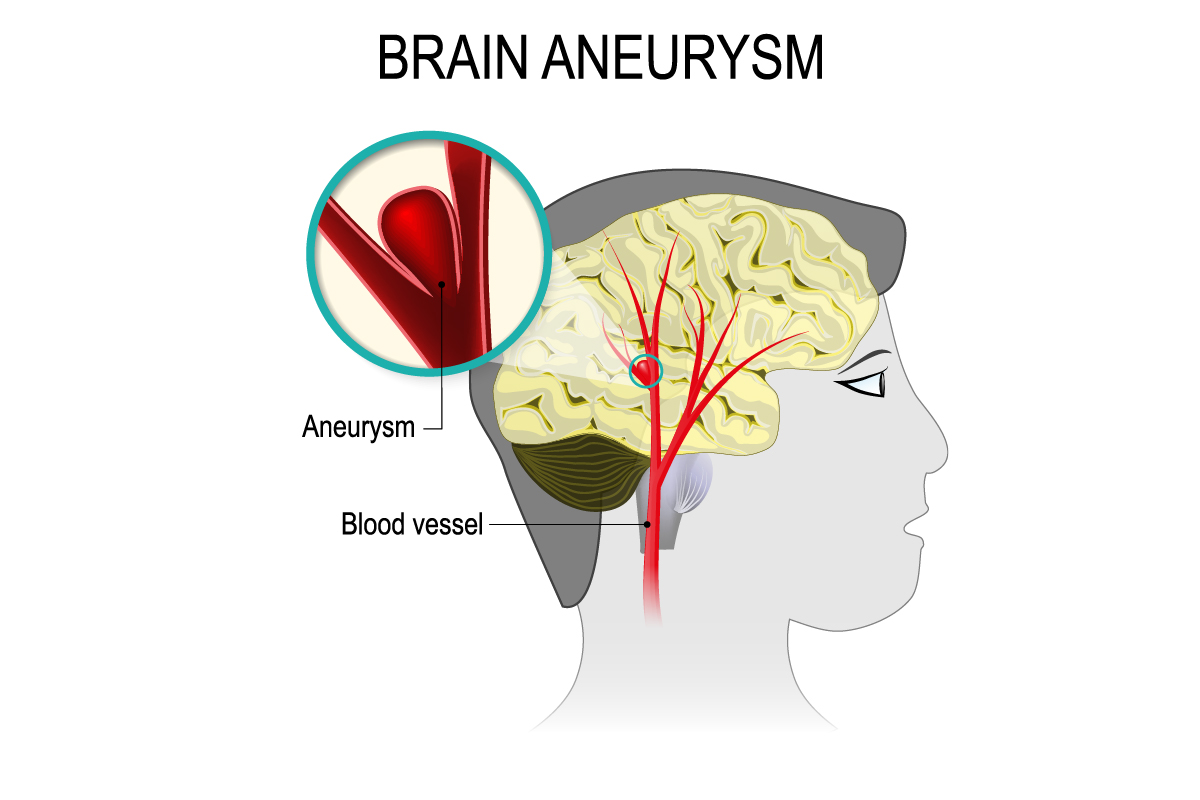Aneurysm care
For many individuals, having an aneurysm is not noticeable. A brain (cerebral) aneurysm is a bulging, weak area in the wall of an artery that supplies blood to the brain. In most cases, a brain aneurysm causes no symptoms and goes unnoticed. In rare cases, the brain aneurysm ruptures, releasing blood into the skull and causing a stroke.
When a brain aneurysm ruptures, it's called a subarachnoid hemorrhage. Depending on the severity of the hemorrhage, brain damage or death might result.
You might inherit the tendency to form aneurysms, or aneurysms may develop because of hardening of the arteries (atherosclerosis) and aging. Some risk factors that can lead to brain aneurysms can be controlled while others can't.
Risk factors
These risk factors might increase your risk of developing an aneurysm, or if you've already had an aneurysm, they might increase your risk of it rupturing:
- Family history: People with a family history of brain aneurysms are twice as likely to have one.
- Previous aneurysm: About 20% of patients with brain aneurysms have more than one.
- Sex: Women are twice as likely to develop a brain aneurysm or to suffer a subarachnoid hemorrhage as men.
- Race: Blacks have twice as many subarachnoid hemorrhages as whites.
- Hypertension: The risk of subarachnoid hemorrhage is greater in people with a history of high blood pressure (hypertension).
- Smoking: In addition to being a cause of hypertension, smoking can greatly increase the chances of a brain aneurysm rupturing.

Diagnosing an aneurysm
Most brain aneurysms are discovered during tests for an unrelated condition. In other cases, an unruptured aneurysm will cause problems by pressing on areas within the brain. When this happens, you might suffer from the following symptoms, depending on the areas of the brain affected and the severity of the aneurysm:
- Severe headaches
- Blurred vision
- Changes in speech
- Neck pain
An eye exam can show increased pressure within the brain, including swelling of the optic nerve or bleeding into the retina of the eye. The following tests might be used to diagnose cerebral aneurysm and determine the cause of bleeding within the brain:
- CT scan of the head
- Spinal tap
- MRI of the head
- Cerebral angiography or CT scan angiography of the head to reveal the location and size of the aneurysm
- Electroencephalogram (EEG) if seizures occur
Brain aneurysm signs and symptoms
If you have any of the following symptoms or notice them in someone you know, please see an HonorHealth health professional immediately:
- Sudden, severe headache
- Neck pain
- Nausea and vomiting
- Sensitivity to light
- Fainting or loss of consciousness
- Seizures
Brain aneurysm treatment options
Treatment will depend on your age, size of the aneurysm, any additional risk factors and your overall health. HonorHealth's experts will discuss your options with you to help determine your plan.
Because the risk of a small aneurysm rupturing is low, and surgery for a brain aneurysm is often risky, your doctor might want to continue to observe your condition rather than perform surgery. However, if your aneurysm is large, is causing pain or other symptoms, or if you've had a previous ruptured aneurysm, your doctor might recommend surgery.
HonorHealth Scottsdale Osborn Medical Center offers the following surgeries to treat both ruptured and unruptured brain aneurysms:
- Coil embolization: A specialist inserts a small tube into the affected artery and positions it near the aneurysm. Tiny metal coils are moved through the tube into the aneurysm, relieving pressure on the aneurysm and making it less likely to rupture. This procedure is less invasive and is believed to be safer than surgical clipping although it might not be as effective at reducing the risk of a later rupture.
- Surgical clipping: Your HonorHealth neurosurgeon places a small metal clip around the base of the aneurysm to isolate it from normal blood circulation. This decreases the pressure on the aneurysm and prevents it from rupturing. Whether this surgery can be done depends on the location of the aneurysm, its size and your general health.
In rare cases, some aneurysms need to be surgically removed and the ends of the blood vessel stitched together. Occasionally, the artery is not long enough to stitch together, and a piece of another artery has to be used.
Aneurysms that have bled are very serious and in many cases lead to death or disability. Management includes hospitalization and intensive care to relieve pressure in the brain and maintain breathing and vital functions such as blood pressure, and treatment to prevent re-bleeding.